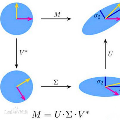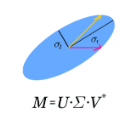Diffuse Optical Tomography (DOT) is an emerging technology in medical imaging which employs near-infra-red light to estimate the distribution of optical coefficients in biological tissues for diagnostic purposes. The DOT approach involves the solution of a severely ill-posed inverse problem, for which regularization techniques are mandatory in order to achieve reasonable results. Traditionally, regularization techniques put a variance prior on the desired solution/gradient via regularization parameters, whose choice requires a fine tuning. In this work we explore deep learning techniques in a fully data-driven approach, able of reconstructing the generating signal (absorption coefficient) in an automated way. We base our approach on the so-called learned Singular Value Decomposition, which has been proposed for general inverse problems, and we tailor it to the DOT application. We test our approach on a 2D synthetic dataset, with increasing levels of noise on the measure.
翻译:Diffuse光学成像(DOT)是医学成像的新兴技术,它使用近红外光估计生物组织中光系数的分布,以便诊断。DOT方法涉及解决严重不良的反向问题,对此,必须采用正规化技术才能取得合理结果。传统上,正规化技术先于理想的解决方案/通过正规化参数升级,其选择需要细微调整。在这项工作中,我们探索以完全数据驱动的方法进行深层次学习的技术,能够自动地重建生成信号(吸收系数)。我们的方法以所谓的“学习的单点值脱形法”为基础,这是针对一般反向问题提出的,我们根据DOT的应用加以调整。我们用2D合成数据集测试我们的方法,测量的噪音增加。





